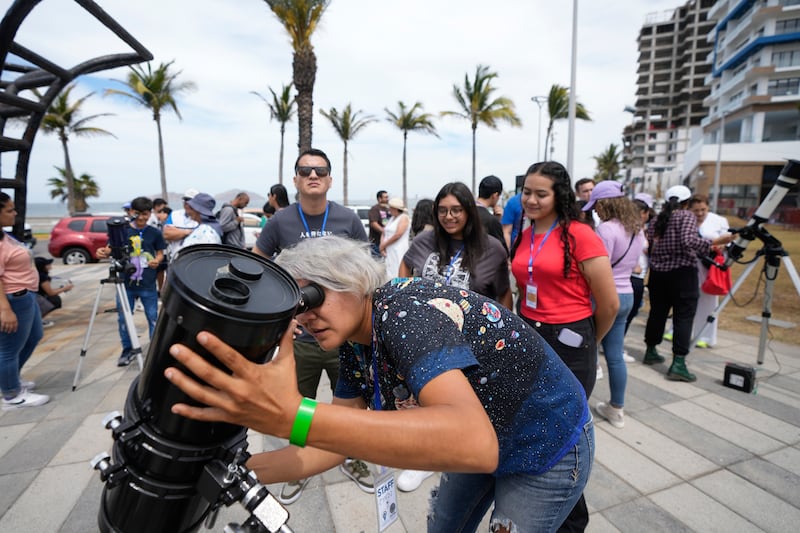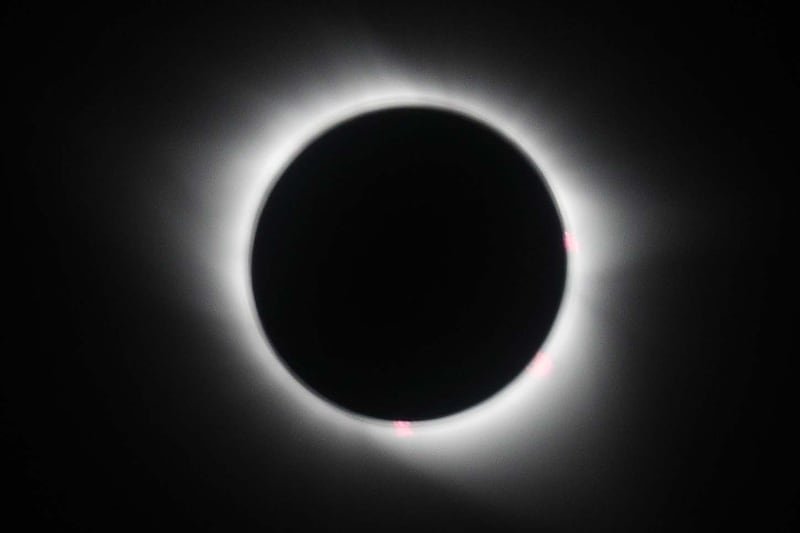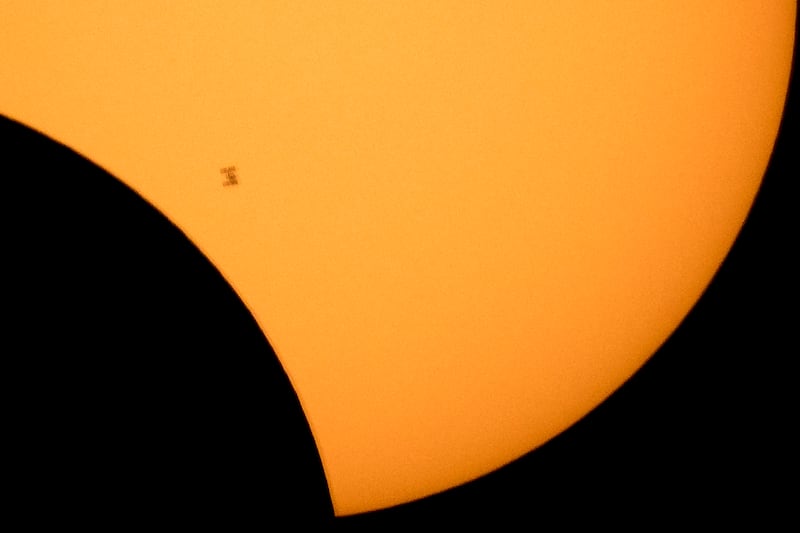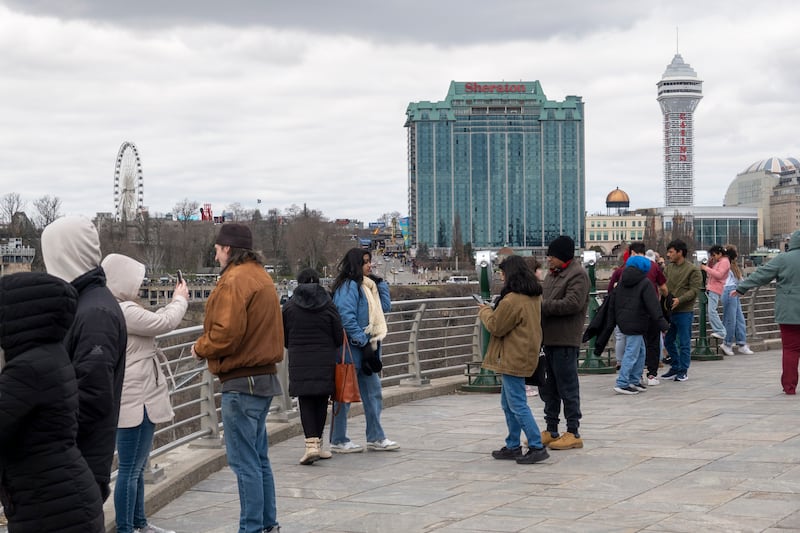A chilly, midday darkness fell across North America on Monday as a total solar eclipse raced across the continent, thrilling those lucky enough to see the spectacle through clear skies.
Eclipse mania gripped Mexico, the US and Canada, as the moon swept in front of the sun, blotting out daylight.
The moon started to cover up the sun as a partial eclipse began over the south Pacific during the afternoon.
After around two hours the eclipse left North America. There will not be another coast-to-coast spectacle on the continent until 2045.

The eclipse’s path of totality stretched from Mazatlan, Mexico to Newfoundland. Revellers were engulfed in darkness at state parks, on city rooftops and in small towns.
Most of those in North America, but not in the direct path, still witnessed a partial eclipse, with the moon transforming the sun into a fiery crescent.

Totality’s first stop on land cast Mazatlan’s sparkling beaches into darkness before continuing northeast toward Eagle Pass, Texas, one its first stops in the US.
Millions along a narrow corridor in North America from Mexico’s Pacific coast to eastern Canada were hoping for clouds to clear as they eagerly waited for totality to reach their location.

Totality lasted up to four minutes and 28 seconds in certain spots.
Cheers broke out along the beach in Mazatlan as the moon began to pass over the sun.

Hundreds in a beachside park had passed the time readying their equipment and listening to a youth orchestra play Star Wars songs while a large screen projected images of Princess Leia behind them.
Luz Elena Aguillon de la O sat in the grass with a group of 14 family and friends who had gathered from Mexico City, Guanajuato and Mazatlan to take in the spectacle.

“Happy to be here with family, friends sharing a singular, unrepeatable event that the universe and nature give us,” she said.
The weather was not looking good for a large part of the eclipse’s path. Clouds could get in the way for a stretch of the route, with the heaviest clouds expected in parts of Texas.

The one area where clear skies were expected was northern New England through to Canada.
That area had “a pretty solid lock to be able to see the eclipse pretty crystal clear”, said National Weather Service meteorologist Cody Snell.
Fifteen US states got a chance to see the full eclipse, although just a small part of Tennessee and Michigan were included. The length of totality varied by location.
The moon’s shadow that fell on Earth followed along a path that was 115 miles wide.
Practically everyone in North America had a chance at catching at least a partial eclipse. The farther from the path of totality, the smaller the moon’s bite out of the sun was.
An eclipse is worth marveling at.
But don't be silly, folks – play it safe and wear protective eyewear. pic.twitter.com/S6REAiZ735
— President Biden (@POTUS) April 8, 2024
President Joe Biden posted a brief video on X, formerly Twitter, to encourage Americans to wear eye protection when viewing the eclipse – in a subtle dig at his predecessor and 2024 rival, former president Donald Trump.
“Folks, enjoy the eclipse, but play it safe, don’t be silly,” Mr Biden said in a video showing him donning eclipse glasses and looking skyward from the balcony outside the Blue Room of the White House.
That is the spot where Mr Trump glanced up toward the sun without eye protection in 2017.
Mr Biden was travelling to Wisconsin, which, like Washington, would experience a partial eclipse on Monday.

Clouds blanketed most of Texas as the total solar eclipse began its diagonal dash across land, starting along Mexico’s mostly clear Pacific coast and aiming for Texas and 14 other US states, before exiting into the North Atlantic near Newfoundland.
The show got under way in the Pacific before noon EDT. As the darkness of totality reached Mazatlan in Mexico, the faces of spectators were illuminated only by the screens of their mobile phones.
In Texas, the south-central region was locked in clouds, but it was a little better to the northeast, the National Weather Service said.
At Niagara Falls State Park, tourists streamed in under cloudy skies with wagons, strollers, coolers and lawn chairs. Park officials expected a large crowd at the popular site overlooking the falls.
During Monday’s full eclipse, the moon slipped right in front of the sun, entirely blocking it. The resulting twilight, with only the sun’s outer atmosphere or corona visible, was long enough for birds and other animals to fall silent, and for planets, stars and maybe even a comet to pop out.

It will be another 21 years before the US sees another total solar eclipse on this scale.
It took around one hour, 40 minutes for the moon’s shadow to race more than 4,000 miles (6,500km) across the continent.
The path of totality — approximately 115 miles (185km) wide — encompassed several major cities this time, including Dallas; Indianapolis; Cleveland; Buffalo, New York; and Montreal. An estimated 44 million people live within the track, with a couple of hundred million more within 200 miles (320km).
Take it all in.
We're getting our first views of the 2024 total solar #eclipse as its shadow makes landfall in Mazatlán, Mexico. pic.twitter.com/FdAACmQGkm
— NASA (@NASA) April 8, 2024
“This may be the most viewed astronomical event in history,” said National Air and Space Museum curator Teasel Muir-Harmony, standing outside the museum in Washington, awaiting the eclipse.
Experts from Nasa and scores of universities were posted along the route, poised to launch research rockets and weather balloons, and conduct experiments. The International Space Station’s seven astronauts were also on the lookout, 270 miles (435km) up.









